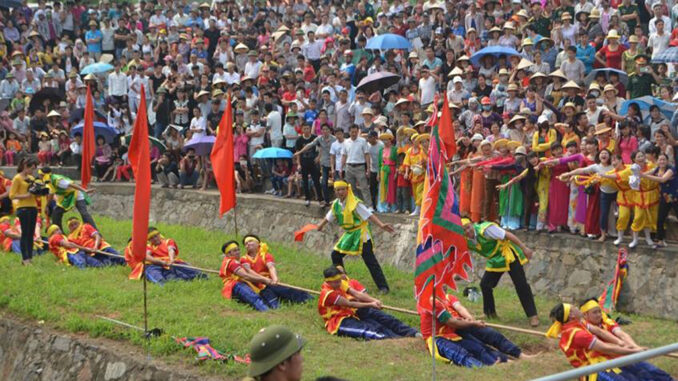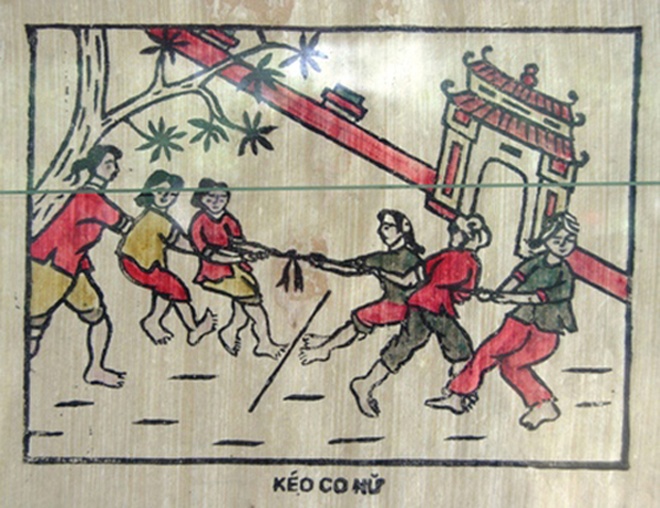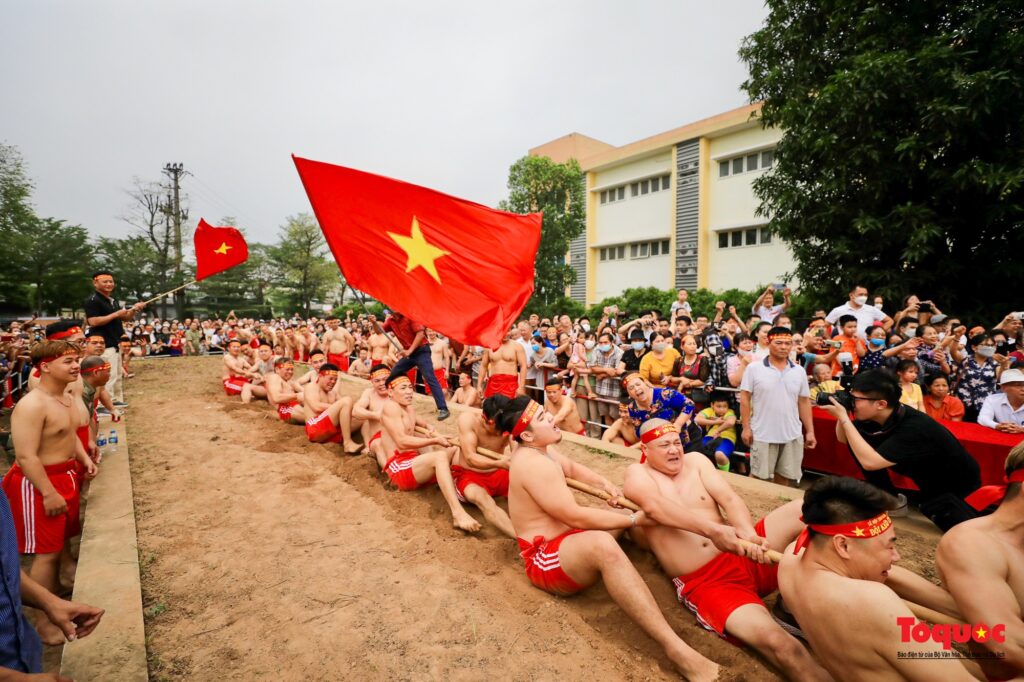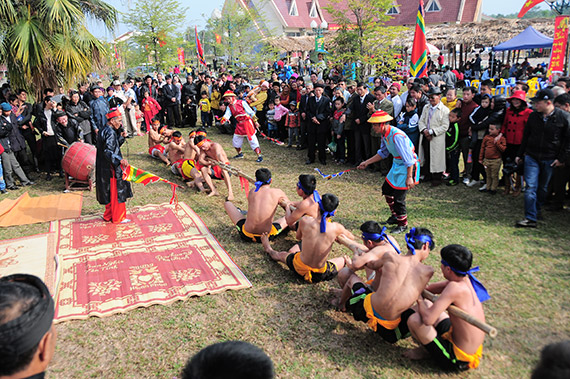
Tugging rituals and games are often organized in front of a village’s communal house or shrine, preceded by commemorative rites to local protective deities. Village elders play active roles in leading and organizing younger people to play the game and holding accompanying rituals. Tugging rituals and games also serve to strengthen unity, solidarity, and a sense of belonging and identity among community members.
Introduce
Tugging rituals and games are often held during harvest festivals, expressing the wishes of agricultural residents and praying for good rain, good winds, lush crops, a happy life, fertility, and prosperity. Not only the Kinh ethnic group, but many other ethnic minorities in Vietnam, such as the Thai, Tay, Nung, and Giay, also have the custom of folk tug-of-war games with many diverse forms and rich ways of playing.
In traditional festivals, tugging games are often included in the festival, demonstrating collective spirit, discipline, the strength of solidarity of the whole community, the will to win, and physical training, human strength, intelligence, and endurance, helping people develop comprehensively in intelligence, virtue, talent, and art.
History

There is no specific time and place to determine the origin of the tugging game. This sport originates from ancient religions and rituals found all over the world such as in Egypt, Burma, India, Japan, Korea, Hawaii, and South America. After that, this game became a pure sport of strength and physicality.
The tugging ritual is widely practiced in “rice-growing culture” in East and Southeast Asia, typically Vietnam, Korea, Cambodia, and the Philippines.
According to researcher Nguyen Van Huy, due to cultural diversity, the way this ritual is practiced in different regions is different. For example, in Vietnam, the tugging ceremony in Thach Ban ward (Long Bien district, Hanoi) involves both parties sitting on the ground tugging with a rope threaded through the hole of a wooden pole buried firmly in the ground. The tugging game in Xuan Lai village (Soc Son, Hanoi) involves pulling on bamboo poles, like in Korea.
Unique features
In Vietnam, tugging is not only a sport, but it is also both a folk game and a cultural activity associated with the spiritual concepts of many ethnic groups.
Tugging games with strings are held during festivals as a ritual to pray for health, peace, rain, and wind. Before the festival, the village usually assigns a young man who is healthy, reputable, and of an age “suitable” for the year of the festival to go into the forest to find trees and weave ropes for the tugging game. The selection of young men to compete is done very carefully.

The person participating in the tugging game must be a healthy person with a well-educated family, prosperous, happy, and reputable in the village. The pulling rope must also be good, durable, and flexible, and when pulled without breaking, the whole village will have good business and good luck that year.
When the tugging game takes place, spectators stand in a circle outside, cheering and encouraging the two teams to play. In some festivals, cheerleaders also use drum beats to encourage the playing team and create an atmosphere that is bustling and vibrant. The game of tugging requires players to have health, flexibility, dexterity, good technique and tactics, and smooth coordination with teammates to win.
Some festivals
- Cu Linh village festival (Thach Ban Ward, Long Bien District, Hanoi)
Held on the third day of the third lunar month, there is a sitting tug-of-war ritual performance with mandatory rituals for participants, tools, and space for performing the performance. Before entering the tug of war, the teams will take communion at the temple and perform holy mass. The special feature of the tools and method of practicing the tug-of-war ritual here is that the competing teams must sit on the ground and pull with a rope threaded through the hole of a wooden pole buried firmly in the ground. The meaning of the sitting tug-of-war ritual is spiritual, expressing the community’s wish that whichever team wins will bring good luck to the village, meaning their message has reached the Saint and the Saint. received and gave them good things.

- Vua Ba temple festival (Xuan Lai Village, Soc Son District, Hanoi)
Before entering the pulling competition, the teams also performed Holy Mass, offering offerings of carp and white rice. The game appeared at the same time as the Temple Festival, which lasted for hundreds of years and remained virtually unchanged in terms of rituals and methods of practice, from the tools serving the performance to the participants.
Conclusion
On December 2, 2015, the tugging rituals and games of Vietnam along with Korea, Cambodia, and the Philippines were recognized by UNESCO as the Intangible Cultural Heritage of Humanity.
Get an opportunity to visit Intangible World Cultural Heritage in Vietnam through Vietnam E-Visa!